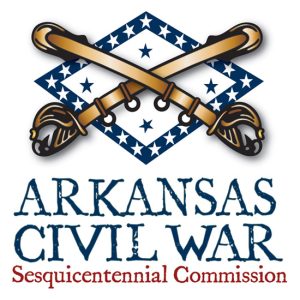calsfoundation@cals.org
Skirmish at Buffalo Mountains
| Location: | Johnson County |
| Campaign: | Shelby’s 1863 Missouri Raid |
| Date: | October 24, 1863 |
| Principal Commanders: | Brigadier General John McNeil (US); Colonel Joseph O. Shelby (CS) |
| Forces Engaged: | Parts of the Eighteenth Iowa Infantry, the Sixth and Eighth Missouri State Militia Cavalry, the First Arkansas Cavalry, and 4 artillery pieces (US); 600 men from Shelby’s cavalry brigade(CS) |
| Estimated Casualties: | Unknown (US); Unknown (CS) |
| Result: | Inconclusive |
In the autumn of 1863, Colonel Joseph O. Shelby launched a raid from Arkansas into his home state of Missouri. After meeting organized Federal resistance at the Action at Marshall, Missouri, Shelby returned to the relative safety of Arkansas. This skirmish was one of the final engagements between Shelby and Federal forces during the raid.
Shelby and 600 men from his brigade departed from Arkadelphia (Clark County) on September 22, 1863, and moved northward to the Arkansas River. Engaging Federal forces as they appeared, Shelby crossed the Arkansas River on September 27 and moved into Missouri on October 2. Moving through the countryside capturing supplies and dispersing small Union garrisons, Shelby and his men were finally stopped by a Federal force at Marshall, Missouri, on October 13. At the conclusion of this battle, Shelby and his men turned southward to Arkansas, crossing back into the state on October 20. The Confederates slowed their pace once inside Arkansas in an effort to rest and recover from earlier engagements.
After initially struggling to defend outposts across Missouri, a well-organized Federal force followed Shelby into Arkansas and worked with other nearby units to stop the retreating Confederates, if possible. Union troops under the command of Brigadier General John McNeil pursued Shelby across much of Missouri, departing St. Louis, Missouri, on October 9 in an effort to find the enemy troops. Entering Arkansas on October 20 in hot pursuit of Shelby, McNeil commanded parts of the Eighteenth Iowa Infantry, the Sixth and Eighth Missouri State Militia Cavalries, and the First Arkansas Cavalry (US), along with four artillery pieces.
Meanwhile, Shelby and his men camped near Buffalo Mountain on October 24, and McNeil and his command found them late that day. Using the four artillery pieces under his command, McNeil shelled the Confederate camp and forced the enemy to withdraw in confusion. Owing to the ruggedness of the surrounding country, the Federals postponed a pursuit of Shelby until the next morning. By this time, the Confederates had advanced to Clarksville (Johnson County), where they crossed the Arkansas River and continued southward, reaching Washington (Hempstead County) on November 3. The Skirmish at Buffalo Mountains was one of the last engagements fought during Shelby’s raid.
The outcome of the skirmish was ultimately inconclusive, as both sides completed their objectives. Shelby continued to retreat southward, while the Federals were able to keep the Confederate forces from returning to Missouri.
For additional information:
Edwards, John Newman. Shelby and His Men: or, The War in the West. Cincinnati: Miami, 1867.
TheWar of the Rebellion: A Compilation of the Official Records of the Union and Confederate Armies. Series 1, Vol. 22, Part 1. Washington DC: Government Printing Office, 1889.
David Sesser
Henderson State University


 ACWSC Logo
ACWSC Logo 



Comments
No comments on this entry yet.